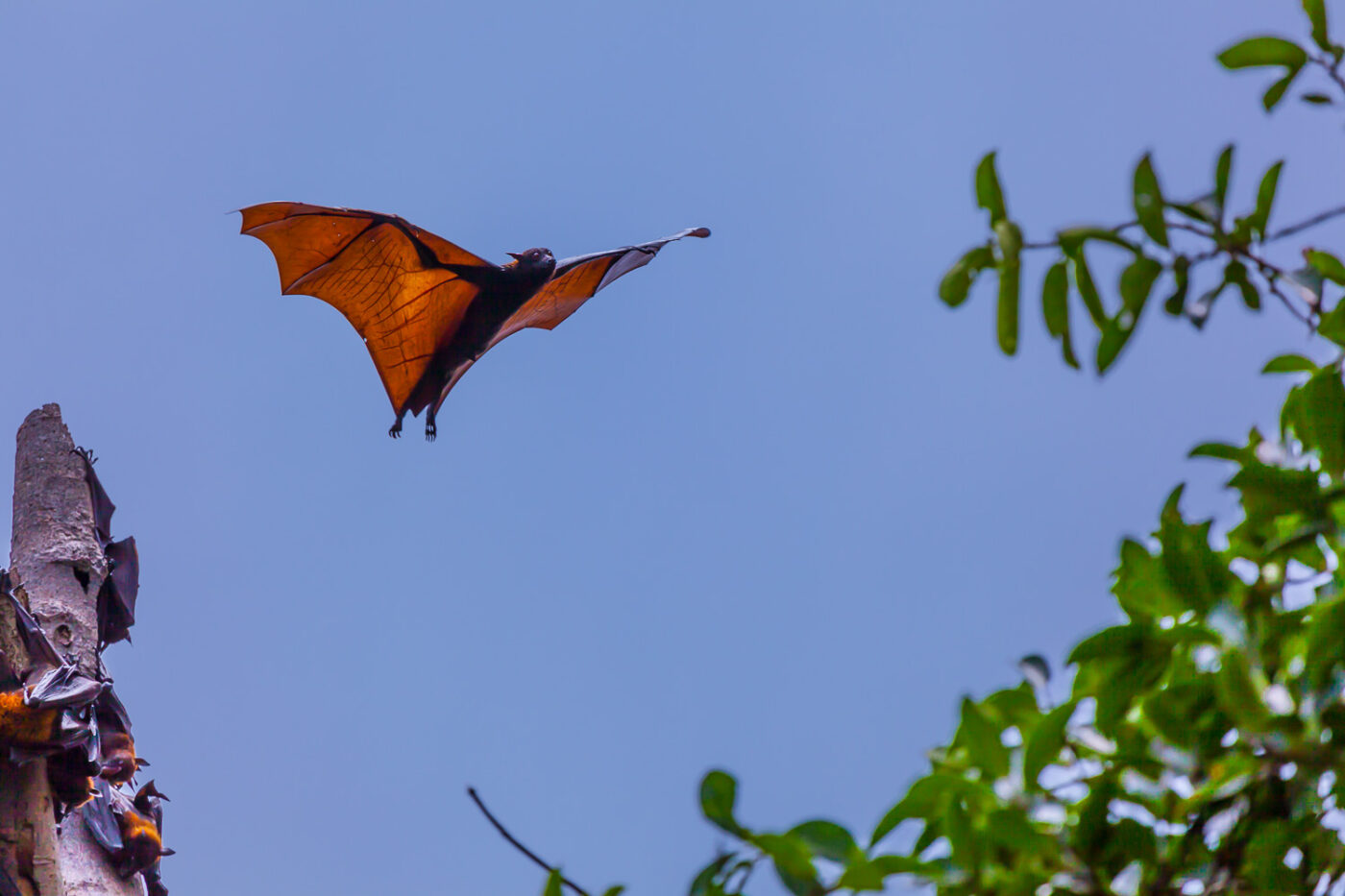
I knew from my friends about a free-living megabat colony (family Pteropodidae, Megachiroptera) not far from Tuban. A little village in the Javanese jungle between rice fields and banana trees that’s the place to go. A local villager guides me to a hill at the edge of the village. Giant tropical trees have overgrown the hill. How amazing, a big megabat colony occupied the trees as their home.
When the villager hit the tree trunk with a piece of wood, the bats flying loud screaming away. After a few laps around the hill, the megabats returned to the trees. What noise and air traffic above the head.
Usually, the bats hang upside down in the trees during the daytime for spending the day roost. Like all bats, Megachiroptera is nocturnal. The activity begins around dawn. Then the megabats leave the day roost and start feeding. Finally, before dawn, they return for a day roost. The large eyes allow them to orient perfectly in the twilight. Unlike other bats, Megachiroptera doesn’t navigate by echolocation. In fact, the orientation is only visually.
Even the bats look like vampires, of course, they aren’t indeed. Unlike other bats, Megachiroptera only eats fruits, nectar, flowers or pollen. Mostly they consume the juice from fruits only. Megabats are pure vegetarians. Their smell is excellent. They look like vampires but they aren’t vampires.
There is no need to fear anything. They don’t harm you. I have seen free-living bats before in the Goa Ngerong cave but not such huge creatures. With a wingspan of up to one and a half metres, they appear truly huge in the sky. Even if they look frightening, they are completely harmless. Altogether megabats only live in limited areas of the world. Nevertheless, Megachiroptera is distributed in tropical and subtropical areas like Southeast Asia or Africa.

